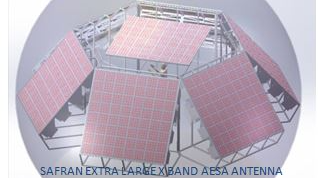Active Electronically Scanned Array antennas (AESA) are a challenge for space communications. To rationalize the industrial approach, the most commonly used solution consists of designing tiles, grouping a few hundred radiating elements, and then assembling a certain number (up to several hundred) to obtain the desired surface. This approach has the advantage of great flexibility to offer different sizes of antenna models, even shaped for installation on mobile machinery. However, 2 technological problems appear:
• The integration of a large number of processing channels for each radiating element,
• Maintaining phase alignment of these on a large size antenna.
This project addresses the phase alignment challenge.
To guarantee full coherence in signals transmitted by the different tiles, the local oscillators (LOs) distributed in the tiles shall be synchronised from the same reference. However, in practice they suffer a time delay mismatch due to the distribution network, which causes a phase difference of the carriers. The time delay can be corrected by calibration of the tile phase control. Unfortunately, the drift of this offset is not fixed and varies over time due to changing environmental conditions and ageing of elements. To guarantee the expected radiation pattern of the AESA, the synchronization of the local oscillator is a key performance and any drift of phase, due to environmental or aging must be minimized.
Traditionally, coaxial Rf cables have been used for the distribution. Using coaxial cables has several disadvantages: weight, price and temperature stability.
Instead, the following is prposed:
use a mode-locked laser, generating pulses (e.g. at around 1 GHz), optical fiber distribution network and a photodiode in each tile to convert the laser signal into a microwave comb, which can directly feed a PLL.
The purpose of this project is to validate this approach of synchronized LOs over several meters by producing and testing a reduced prototype.

